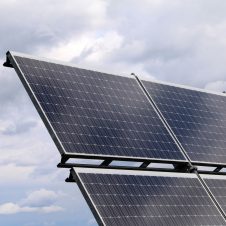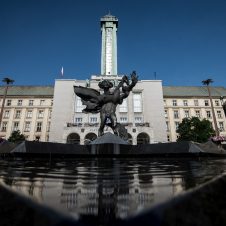Thematic articles
Projects
-
The energy system of a house
-
Energy accumulation
-
Energy savings in industry
-
Thermovision in construction
-
Hydraulic platforms
-
Biomass as an alternative in the energy system
-
Boiler for combustion of moist chips
-
Gasification plants

- Place
- VŠB - Technical University of Ostrava
- Website
- http://www.zlepsisitechniku.cz/kategorie/technicke-vychytavky/
The energy system of a house

If you are often away from home, you will appreciate the ability to manage a “life” in your house remotely. Yes, nowadays, with the emerging technologies, you can turn on the light in your house, turn on the washing machine, or adjust the heating thousands of kilometers away.
Do so called control system of a house can involve common household appliances, but also various energy sources. All with the aim of optimizing the energy consumption in the building. What about an electric car? It is driven by an electric motor, and a battery is usually used as a power source, it must be charged before driving, and the driving distance of the vehicle depends on its capacity. An electric car may not only serve as an environmentally friendly, elegant and quiet means of transport. If it was included in the system of a house, it could serve as an intelligent mass storage of electricity. Electric vehicles may therefore function not only as means of transport, but they can feed energy back into the network – using intelligent technology of charging and discharging.
Also, the team of scientists and students of the Department of Cybernetics and Biomedical Engineering has long been involved in optimizing the network control system of a house. Although the theoretical and practical results are excellent, generally, greater expansion of electric vehicles faces several challenges. Public awareness about electric cars is associated with misleading information about the high purchase price of the vehicle and the absence of efficient batteries for adequate driving range. More than this, the problem is the still developing infrastructure and insufficient supply of manufacturers of electric vehicles. Even so, it can be assumed that the globalization of the market, growth in fossil fuel prices and stricter environmental protection will enable their future use, not only in transport.
The Faculty of Electrical Engineering and Computer Science, VŠB-TUO
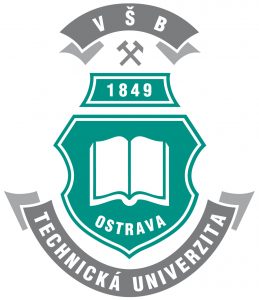
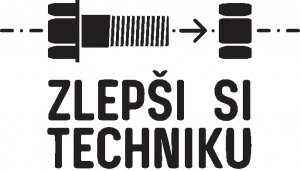

- Place
- VŠB - Technical University of Ostrava
- Website
- http://www.zlepsisitechniku.cz/kategorie/technicke-vychytavky/
Energy accumulation

There is sufficient energy around us, but it may not always be available in a useful state or at the moment when we need it. For example, the sun does not shine at night, but people still need light. Therefore, we want to “store” energy for later use.
New technologies and methods of managing the charging and discharging of batteries enable us to collect and store energy from various sources and release it in such a manner that we achieve the lowest possible energy loss and increase the beneficial effects and efficiency of the entire system.
For example, the use of energy from photovoltaic systems has proven to be problematic in recent years. A large generation capacity of solar power plants was installed and the distribution grid was not able to deal with fluctuations cause by intense sunlight, which in turn caused instability. It is therefore necessary to connect all processes of generating electricity from renewable sources and make it possible to use accumulated surplus energy at a later time.
The subject of the university team research is a device for storing electricity and, conversely, using at another time. This is a necessary part of the project, which is focused on obtaining energy from renewable and non-traditional sources, because energy thus acquired is not always available when people need it. Therefore, they developed a new transformer for the energy-accumulation system. In practice, it functions as a sort of bank in which energy can be deposited in the case of surplus production and then withdrawn in the event of an outage or sudden increase in consumption.
An advantage of this system is that it is not intended only for cities and villages, but can also be used as a backup energy source for industrial enterprises and as a source of energy in developing countries or in outlying and inaccessible areas where alternative sources, such as wind and solar, are used for generating energy.
Alternative sources of energy, such as water, sunlight and wind, among others, have enormous potential. However, production of energy from these sources causes instability in the distribution grid. Therefore, our objective is to connect all processes of generating energy from renewable sources and to store surplus energy for later use. They are working to ensure that we all will not notice any fluctuations.
ENET Centre, VŠB – Technical University of Ostrava in cooperation with Faculty of Electrical Engineering and Computer Science.



- Place
- VŠB - Technical University of Ostrava
- Website
- http://www.zlepsisitechniku.cz/kategorie/technicke-vychytavky/
Energy savings in industry

We can never fully use energy and losses will therefore always occur, whether we are converting energy from a chocolate bar into energy needed to run up a hill or electricity into heat. However, we can reduce losses.
Production in large industrial enterprises involves enormous consumption of energy. If we include heating, ventilation, lighting and air-conditioning, we arrive at huge numbers as well as substantial energy losses. However, the university team ise focusing not only on energy; they also have their sights set on conservation measures for energy-intensive operations such as hospitals, schools and other such institutions.
They are monitoring and dealing with, for example, energy consumption at Opava Hospital; they have prepared project documentation for the Lower Vítkovice Area Energy Centre; and they are cooperating with other firms both within and beyond Moravian-Silesian region. This involves solutions in the area of offtake of electricity, heating, cooling, ventilation and preparation of hot water. They always conduct an analysis of the current state of energy consumption and operational loading. They assess everything, perform simulations and design such solutions that will enable everything to function with maximum efficiency while reducing energy intensity. Thanks to a unique computer program specially developed for these projects and optimisation of all processes, they are able to significantly reduce an entire complex’s energy consumption.
The financial costs of energy and, at the same time, the burden on the environment are currently the most closely monitored aspects in the area of investments. Therefore, the resulting product of their solutions is not only lower consumption of electricity and the resulting lower costs, but also a fundamental reduction of impacts on the environment.
Energy Research Centre in cooperation with Faculty of Electrical Engineering and Computer Science, VŠB – Technical University of Ostrava



- Place
- VŠB - Technical University of Ostrava
- Website
- http://www.zlepsisitechniku.cz/kategorie/technicke-vychytavky/
Thermovision in construction

Thermography is a way of capturing infrared radiation emitted by every warm object, and especially of making it visible. And not only that, the thermal imaging camera captures changes in material properties, such as when cutting, cracking, excessive wear etc. The thermovision (as the thermal imaging camera is also called) creates an image that shows the surface temperature. The thermal imaging camera is frequently used in construction for measuring heat loss from buildings, but it also has other applications in engineering, criminology e.g. in search of people, medicine, etc. The staff in one zoo knows something about it: a scientist measuring heat loss from the elephant pavilion was asked to use the thermal imaging camera for “measuring” the resident of the pavilion, the elephant himself. The thing was, that the elephant had been struggling with inflammation for a long time, but due to the size of this dangerous animal, it was impossible to determine the exact source of the illness. The discovery of tendinitis in his right hind leg using infrared thermal imaging camera then contributed to the rapid and gentle treatment of the animal patient.
On the market, there is a wide spectrum of various thermal imaging cameras by type of use and prices from thirty thousand to several million. The one the university team uses for scientific work is worth around one million Czech crowns. Its recording allows them to see defects on buildings and to find a solution for preventing heat loss that bleeds us dry every winter. Based on their measurements, they suggest how to save on heat. They have created a new composition of the thermal insulation composite systems in the plinth, which they have patented. In other words, they propose to place insulation better to avoid unnecessary heat loss in this area of the largest energy loss.
These measurements and research are carried out by Zdeněk Peřina and his team at the Faculty of Civil Engineering, VŠB-TUO



- Place
- VŠB - Technical University of Ostrava
- Website
- http://www.zlepsisitechniku.cz/kategorie/technicke-vychytavky/
Hydraulic platforms

During the operation of elevators, various lifts and hydraulic platforms, large amounts of energy are consumed. How could this energy be used in the phase of going downwards by gravity or inertia?
his method of conversion of motion (kinetic) energy into usable electrical energy is called recovery. Generally this phenomenon is based on the principle that the driving electric motor sets the vehicle to the required mechanical motion. However, there will be occasions when such a device will start performing the so called passive or constant movement, which is the movement of the load downward, the transition to the generator mode after exceeding the synchronous engine speed, range of escalators, and the like. The energy that is generated during this process can be returned to the supply network, or stored in batteries or other energy storage devices for further use. And believe it or not, it can actually save a considerable amount of money.
Within the scientific and research project, the university team first made a series of computer simulations of the behaviour of hydraulic platforms in various working conditions – when starting, stopping, emergency stop, etc. They focused on the simulation of various hydraulic circuits, valve settings, flow of hydraulic oil in these systems, description and characterization of the working pressure and strokes, etc. In the development room, they subsequently assembled and tested a lifting platform with uniaxial and biaxial linear regulated regenerative converter. And the result? The performed tests based on recommended modifications and changes showed energy savings of 35-42 % compared to the existing commonly used electric motors. An illustrative example: 10 such hydraulic platforms per year can save up 2MWh of electricity. In the theatres, in warehouses, heavy duty industrial enterprises. And this is just the beginning. Other possible applications of hydraulic regenerative transfer system are taking shape: the use for flight simulators, during operation of industrial valves, during operation of water or steam turbines and boilers, in nuclear power engineering, or in the manufacture of paper and rubber. In the case of the estimated 30 % savings in electrical energy, the expended funds will be repaid within 2 years. The research clearly showed that investments in the modernization of hydraulic stations for the particular system is definitely worthwhile.
The Faculty of Mechanical Engineering, VŠB – Technical University of Ostrava in cooperation with OCHI-INŽENÝRING


Biomass as an alternative in the energy system

As part of its efforts to reduce energy consumption and CO2 emissions, Ostrava’s zoo has built a boiler system burning biomass (woodchips) as part of its dendrology complex. The zoo covers a large area, and is a permanent source of wood-based biomass. The zoo uses a chipper, loader and tractor to harvest and process the biomass before burning.

- Place
- VŠB - Technical University of Ostrava
- Website
- http://www.zlepsisitechniku.cz/kategorie/technicke-vychytavky/
Boiler for combustion of moist chips

The maintenance of greenery, trimming trees or cutting down a forest produces large amounts of waste. However, branches can be pulverized into the so called chips. This material can be used for heating in the boiler, but because it contains a lot of water, its drying consumes large amounts of energy. Thus, the efficiency is very small, the combustion efficiency in a conventional boiler reaches barely 40 %.
The university team has found a way to heat with wet chips with significantly higher efficiency of almost 100 %. They put together a model of the boiler, whose essential part is the condensing heat exchanger. The boiler uses the condensation heat of the steam contained in the flue gas and at the same time, it meets the required legislative limits. The total size of the boiler is not much larger than that of standard boilers of a similar performance, its design allows for variable installation. The device is also suitable for use in two-circuit heating systems, e.g. floor and radiator heating.
However, wet chips are not very suitable quality fuel, it does not have a high calorific value. The price of fuel biomass is still growing and it can be expected that the pressure on the use of waste biomass, i.e. also wet chips, will increase. Especially in large agricultural operations, gardening companies, or in technical services of cities this type of combustion is worthwhile. Chips can be obtained from many different types of biological waste. Therefore, piles of leaves from beets do not have to lie waste, and at the start of the heating period, they may be used as fuel in the fresh state. Although the acquisition price of the boiler is about a third higher than the price of a standard boiler, the operating costs will soon return by using fuel “for free”. Moreover, places with the animal breeding and production are heated all year round. We do not need to wait for the winter.
The university team had the new boiler patented and they are currently cooperating with a network of manufacturers of heating equipment. Because it is unique in the European context, they are considering the sale of licenses abroad.
Energy Research Centre, VŠB-TUO



- Place
- VŠB - Technical University of Ostrava
- Website
- http://www.zlepsisitechniku.cz/technicke-vychytavky/vyroba-plynu-z-odpadu/
Gasification plants

The total natural gas reserves in the world are currently estimated at 511,000 billion cubic meters and they will last for up to (only?) 200 years. They are used for cooking, heating water, producing electricity and heat, for transportation, or even as a medium to heat recovery and cooling units. Therefore, it is a seemingly inexhaustible source of energy. But what will happen in those 200 years, when natural gas will be used up?
People from the VŠB – Technical University of Ostrava ask this question every day and try to make alternative gas from sorted waste. They have built a gasification unit, which is in one of the buildings in the campus, representing an advanced version of the original equipment from 2007. The tested systems of energogas dry cleaning and a new way to use syngas have been newly incorporated into the facility. It is a synthesis of liquid biofuels of the second generation using Fischer-Tropsch method and the natural gas production.
In this device, they have managed to obtain gas from waste and use it to further generate energy. Given the current trend of consumer society that produces tons of garbage a year, it seems that the production of gas from waste could be a suitable ecological alternative for our descendants.
Energy Research Centre at VŠB – Technical University of Ostrava





